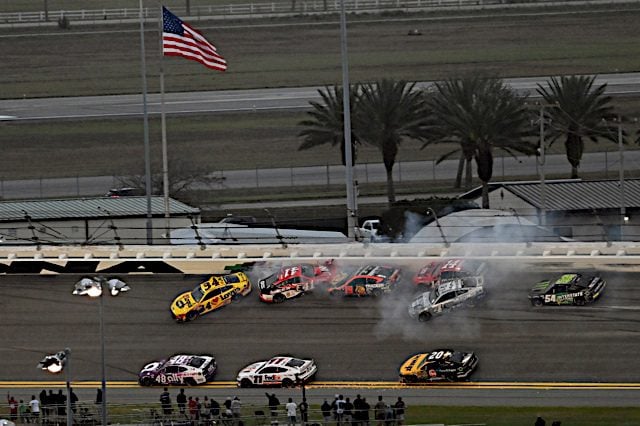What can be done to fix overtime?
Last Sunday (Feb. 19) treated viewers to a story that they have become all too familiar with at Daytona International Speedway and Talladega Superspeedway, as an intense battle for the lead in the closing laps was ruined by a spin and a late caution.
Twelve extra laps and two subsequent overtime restarts junked half the field, only for the race to end under caution anyway. By the end of the race, the finishing order had no resemblance to the running order after lap 200.
Kyle Busch, who was the leader when overtime began, was not a happy camper as another chance at Daytona 500 glory slipped out of his fingertips.
The same story is told almost every year. It’s the biggest race of the season, and the ‘give’ in give and take goes out the window in the closing laps. The drivers go out guns blazing with nothing to lose on overtime restarts, and the viewers are usually left with a glorified demolition derby that decides the winner.
It’s outright embarrassing. The NASCAR Cup Series is the pinnacle of stock car racing, yet time and time again, the drivers cannot make it two laps without wrecking at the end. Even worse that it comes in the Daytona 500, the one day of the year where NASCAR has a reach beyond its diehard fanbase. What message does it send to casual viewers when NASCAR’s Super Bowl ends with a great display of ineptitude?
Overtime – the rule that has led to many of these finishes – was first implemented in 2004. But overtime itself isn’t the culprit, as these types of finishes have only become the norm in the last few seasons. So what went wrong, and what can be done to fix it?
Ending races at the scheduled distance, while a solution, would not be a popular one; there’s a reason why this was done away with in the first place. What should be experimented with, however, is bringing back single-file restarts in the final 10 laps.
Overtime finishes in the 2000s decade rarely devolved into chaos because the drivers restarted single file and they only had one attempt at finishing the race under green. Double-file restarts have absolutely contributed to the mania at Daytona and Talladega, because these endings are all a matter of which line gets the best push. And if one line of cars is moving in the wrong direction, the drivers get impulsive and impatient.
With single file restarts, the drivers wouldn’t…
Click Here to Read the Full Original Article at …

